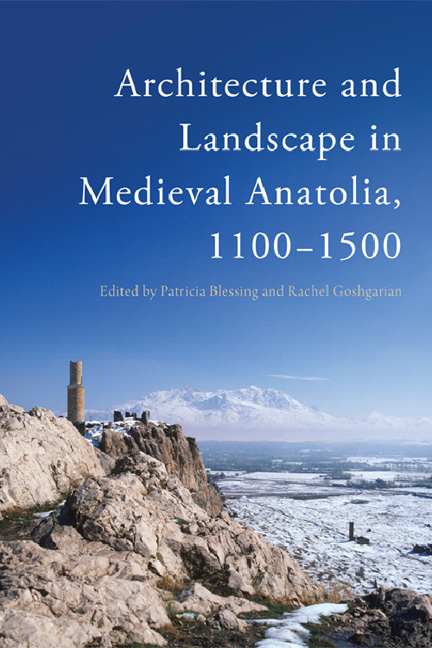Book contents
- Frontmatter
- Contents
- List of Illustrations and Tables
- Acknowledgements
- Foreword
- Map
- 1 Introduction – Space and Place: Applications to Medieval Anatolia
- Part I Building: Masons and Infrastructure
- Part II Social Groups: Akhis and Futuwwa
- Part III Exchange: Islamic and Christian Architecture
- Part IV Frameworks: Language, Geography and Identity
- Notes on Contributors
- Bibliography
- Index
Foreword
Published online by Cambridge University Press: 03 January 2018
- Frontmatter
- Contents
- List of Illustrations and Tables
- Acknowledgements
- Foreword
- Map
- 1 Introduction – Space and Place: Applications to Medieval Anatolia
- Part I Building: Masons and Infrastructure
- Part II Social Groups: Akhis and Futuwwa
- Part III Exchange: Islamic and Christian Architecture
- Part IV Frameworks: Language, Geography and Identity
- Notes on Contributors
- Bibliography
- Index
Summary
One year, close to the end of the semester, I overheard one of my undergraduates talking to a fellow student. ‘It's really easy,’ he said. ‘After the Romans came the Byzantines. Then came the Seljuks and the Ottomans.’
In giving a class on the architecture of classical and medieval Anatolia, I had, of course, also mentioned Georgians, Armenians, Beyliks, Danishmendids, Mengujekids, Trapezuntines, Crusaders, and other states and cultures. But this was cram time, and the boileddown version was being prepared for examination booklets.
The readers of this volume are most definitely not be served the boiled-down and canned version of medieval Anatolia. Instead, the editors and contributors have served up a new set of dishes: crossing traditional ethnic, chronological, confessional and disciplinary borders; in a phrase, stirring things up.
One of the editors is an art historian, the other an historian: the contributors are a mix of the two. And yet all the authors are engaged with the material culture of medieval Anatolia, from the rural to the urban, from the sacred to the profane, with topography and geography as well as with inscriptions and a wide variety of textual sources. This mixes things up as well, but not in a random way; in each of these essays is a sense of place, of regional specificity, and of the issues of the time.
Another thing the contributors take for granted is cultural interaction and complexity. They are suspicious of master narratives and truisms, be these cliches concerning Oriental despots, gender roles, nomads, dervishes, monks, gazis, craftsmen, guilds or motivations that are somehow not based on war or religion. No one can learn equally well the languages and literatures of all the cultures of the area that is now Turkey, and so there is a lot of cross-referencing going on between the essays – all to the advantage of the reader, and to the study of medieval Anatolia, a study that is progressing beyond paradigms of nationalism, provincialism, periphery and orientalism (in both the traditional and Saidian senses of the word). In exploring cultural experimentation, byways, gardens, stables, the tombs of holy men, exclusive male clubs, not to mention cities and monuments off the beaten track, the reader will be moved to explore new trajectories, both chronological and geographical, and the research of a new generation of historians and art historians, itself diverse.
- Type
- Chapter
- Information
- Architecture and Landscape in Medieval Anatolia, 1100-1500 , pp. xii - xiiiPublisher: Edinburgh University PressPrint publication year: 2017

